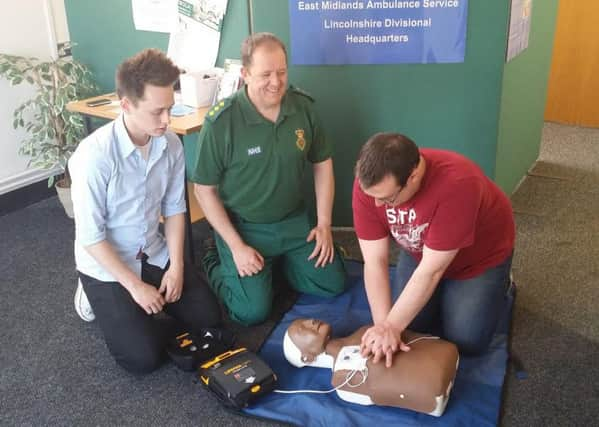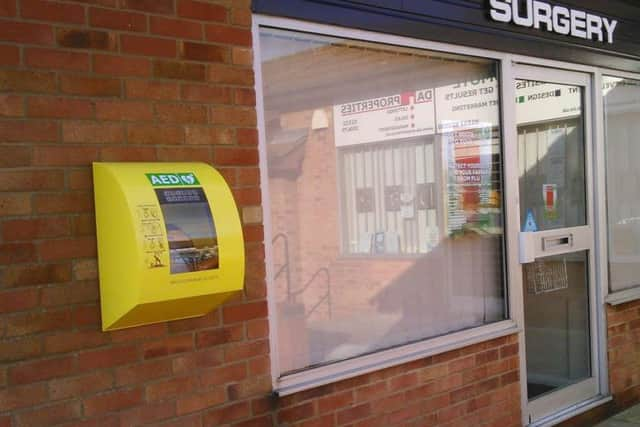‘The more defibrillators in rural areas the better,’ says EMAS community response manager


Coupled with the East Midlands Ambulance Service’s target of reaching patients in eight minutes just 75 per cent of the time, it is no wonder that more and more rural communities are installing their own defibrillators.
But are these pieces of kit really that important? “Absolutely,” said EMAS community response manager Steven Pratten. “What these machines do is amazing. That’s why these are becoming more common nowadays, and they’re incredibly simple to use and affordable. Going back 10 years you were looking at a machine sat on a trolley, in some cases costing tens of thousands of pounds. Now you’re looking at under £1,000.”
Advertisement
Hide AdAdvertisement
Hide AdMr Pratten, 40, heads up the community response arm of EMAS, a department which is responsible for approving the location of public access defibrillators (PADs), also known as automated external defibrillators (AEDs), and training people in the community how to use them.


Lasting two hours, the sessions are led by community resuscitation trainers on-site and include both how to use the PADs and how to give cardiopulmonary resuscitation (CPR).
Groups are usually made up of around 12 people, but at a recent training session more than 20 keen villagers attended. The session was run by Mr Pratten, who is based at EMAS’s Lincoln headquarters.
He said: “We deliver training which is more of a confidence thing because the machine itself talks people through everything it wants them to do.”
Advertisement
Hide AdAdvertisement
Hide AdSome 300 defibrillators are located around Lincolnshire. But not all of these have public access – some are static machines which are installed by businesses and other organisations for staff and customers.
Mr Pratten and his team are working on increasing the number of these life-saving machines across the county. He said: “The more defibrillators out there the better, especially with the rurality of Lincolnshire.
“With cardiac arrests, everyone thinks of elderly people or middle-aged people who smoke or drink too much.
“It might surprise you that every week in the UK, 12 children of school age have a sudden cardiac arrest, undiagnosed. These are children who are seen at the school gates and are absolutely fine in the morning, then go out at play-time and drop dead for no apparent reason.”
Advertisement
Hide AdAdvertisement
Hide AdIt is this shocking figure which has prompted EMAS to head a campaign urging the Department for Education (DfE) to include CPR and life-saving skills within the national curriculum.
Meanwhile, the DfE has recognised the importance of defibrillators and has issued guidance recommending that all schools consider purchasing a machine. Mr Pratten himself has written to 961 schools across the county to reiterate the point.
The BHF, which has helped to place more than 13,500 defibrillators across the UK in the last 15 years, is equally as keen to spread the word about PADs. Charity spokesperson Cathy Beveridge said: “When someone’s had a cardiac arrest, the scientific evidence to support early defibrillation is overwhelming. The delay from the time the person collapses to the delivery of the first shock is the single most important determinant of survival.
“If defibrillation is delivered promptly, survival rates as high as 75 per cent have been reported. The chances of successful defibrillation decline at a rate of about 10 per cent with each minute of delay; therefore it’s important for a defibrillator to be used as quickly as possible after someone’s had a cardiac arrest.
Advertisement
Hide AdAdvertisement
Hide Ad“In rural communities, it may take some time for the ambulance to arrive (the target is to get there in eight minutes 75 per cent of the time) so having a defibrillator in the community means that person has a better chance of survival.”
** Mr Pratten would encourage any groups thinking of buying a debrillator to call his team first, as not only can they advise which models are best, they can also buy them in at a heavily discounted price from the manufacturer. For example, one model with a shelf price of £1,495 can be purchased by EMAS for £650, dramatically reducing the amount fund-raisers would have to collect. For more information, email [email protected]